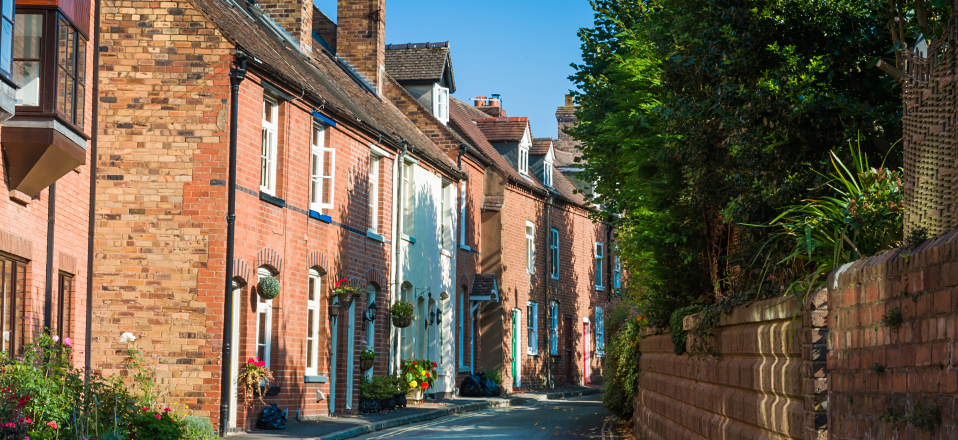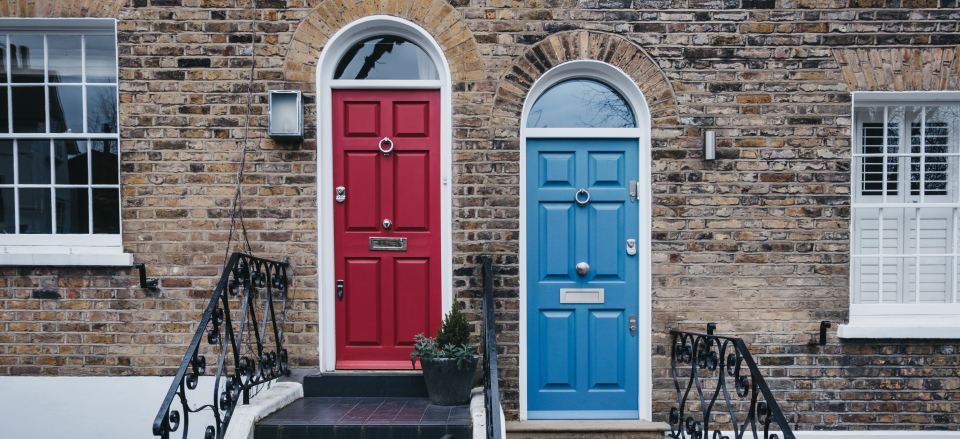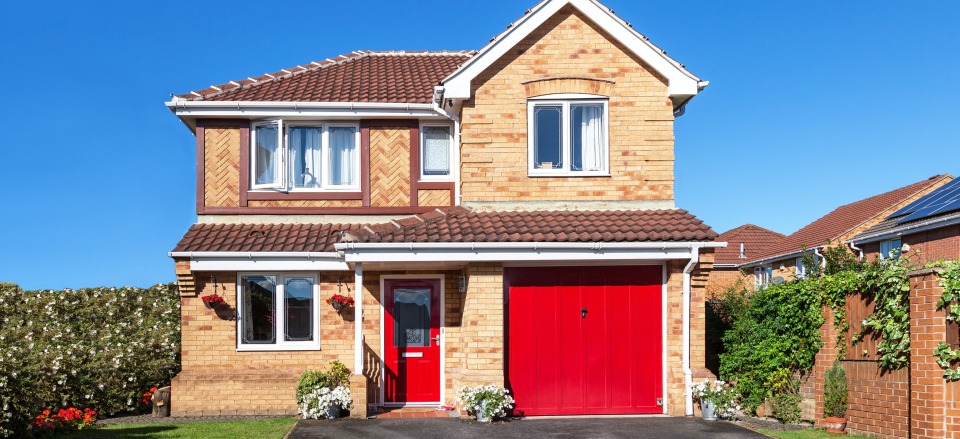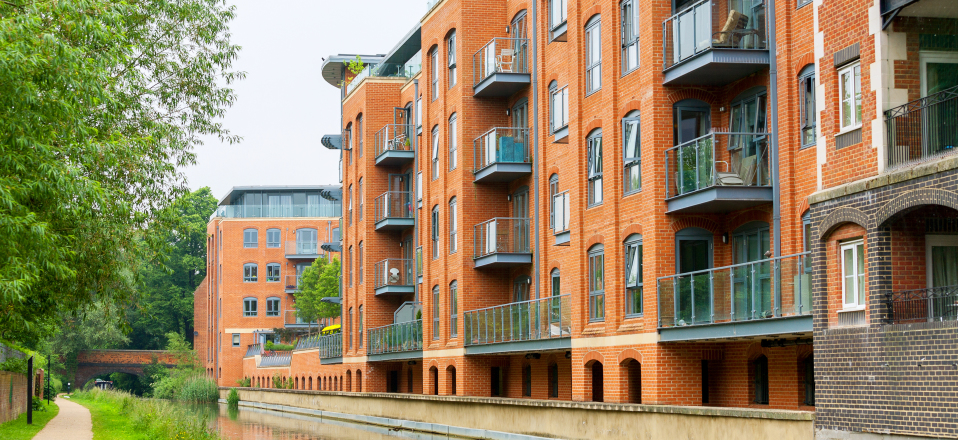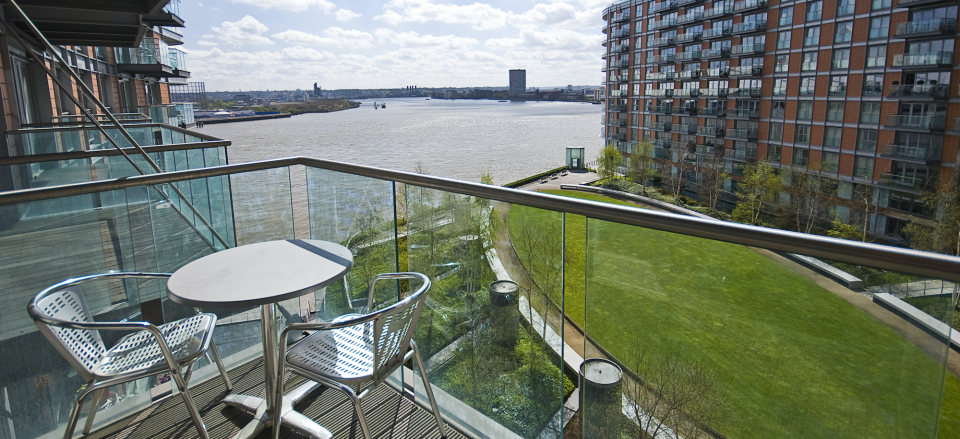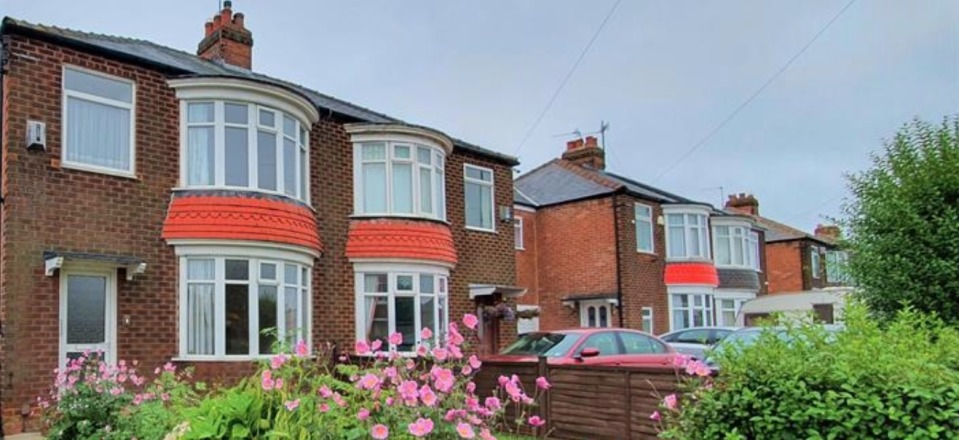Revealed: the buyers that are set to dominate the housing market in 2021
The pandemic is fuelling a reversal of fortunes for first-time buyers and homeowners, according to our latest House Price Index.
First-time buyers are set to be overtaken by homeowners as the driving force of housing sales next year.
Despite a jump in first-time buyer appetite when the English housing market re-opened in mid-May, demand has tapered off over the last two months, according to our latest House Price Index.
Although first-time buyer interest in stepping onto the housing ladder remains well above 2019 levels, it has now settled back to pre-pandemic levels – and is set to soften further into 2021.
Meanwhile, homeowners were slower to respond immediately after lockdown lifted, but their appetite to move house is 37% higher than pre-pandemic levels and a whopping 53% higher than this time last year.
This reversal will take time to feed through in the housing market – but the gap between mortgaged homeowner and first-time buyer activity is likely to widen further into 2021.
Why is first-time buyer appetite starting to lag?
First-time buyers have been the driving force of the housing market over the last decade, bolstered by the government’s Help to Buy scheme and greater availability of high loan-to-value (LTV) mortgages.
And in 2019, first-time buyers overtook mortgaged homeowners as the most dominant buyer in the housing market.
But restricted mortgage availability, tighter lending criteria and growing economic uncertainty as a result of the pandemic are taking their toll on first-time buyer appetite – and their ability to snap up a home.
Is it the same across the UK?
First-time buyer appetite in September has grown the least in London (1.8%), Yorkshire and the Humber (4.8%) and north west England (9.7%) when compared with the first three months of the year.
By comparison, homeowner interest in moving home has jumped 83.5% in Scotland, 66.2% in the east of England and 65.8% in the south east.
Going forward, it is the regions outside southern England where first-time buyer demand is set to be most impacted, reflecting aspiring homeowners' reliance on high loan-to-value mortgages, particularly at or above 90% LTV.
But London, where high loan-to-value loans are limited to buyers on high incomes or with large deposits, is not immune to changes in lending constraints.
And a greater proportion of first-time buyers in London may turn their attention to commuter areas to purchase their first home.
So why are more homeowners interested in moving?
Homeowners have accounted for an increasingly smaller share of housing sales in the last 10 years, as they stayed put and gradually paid off their mortgages.
But they’ve become more active in the housing market since restrictions lifted, fuelled by the search for more space and a once-in-a-lifetime re-evaluation of housing requirements.
With many homeowners having either no mortgage or a small loan, they also have an equity advantage over other buyers, in particular those stepping onto the housing ladder.
In fact, three quarters of homeowners are over 45 years old and more than half are mortgage-free, so they can potentially make the move as cash buyers.
Richard Donnell, research and insight director at Zoopla, said: “A change in the mix of buyers is supporting market conditions with sustained demand from equity-rich homeowners seeking more space and a change in location.
“In contrast, first-time buyer demand is weakening. First-time buyers have been a driving force of housing sales over the last decade.
"They remain a key buyer group but lower availability of higher loan-to-value mortgages and increased movement by existing homeowners means a shift in the mix of buyers into 2021.”
House building levels nosedive 62% during lockdown
The number of homes being built between April and June plunged as work on building sites was suspended.
The coronavirus pandemic led to a 62% fall in the number of new homes being built in England between April and June.
Only 15,950 new-build properties were finished during the three months, the lowest level since records began in 2000, according to the Ministry of Housing, Communities and Local Government.
It follows a 5% drop in building levels during the first three months of the year, which ended a seven-year period in which the number of new properties being built had been steadily increasing.
Brand new properties already sell for a significant premium compared with homes that are being re-sold, and the fall in building levels is likely to put further upward pressure on prices.
Why is this happening?
Work on construction sites was suspended in March when the UK entered lockdown in response to coronavirus.
When work was able to resume, sites opened in phases and builders had to observe social distancing measures, which reduced the speed at which properties could be built.
But with the UK now facing a second wave of coronavirus and employees once again being told to work from home where possible, construction workers have been given permission to continuing working as normal.
Who does it affect?
While the slowdown in building levels is bad news for anyone hoping to buy a new-build home, it has been particularly stressful for people planning to use the government’s Help to Buy initiative, which ends in its current form on 31 March 2021.
In order to qualify for the 20% equity loan, the property being bought through the scheme originally had to have been built by the end of December.
But the government has since extended the deadline for construction until 28 February 2021 to ensure people do not miss out as a result of building delays caused by the pandemic.
The current version of Help to Buy will be replaced by a new scheme, which is limited to first-time buyers, on 1 April 2021.
What’s the background?
A total of 147,180 new homes were built in the year to the end of June, 15% fewer than during the previous 12-month period.
But construction is only one way in which homes are added to the housing stock, with residential properties also created through the conversion of agricultural and industrial buildings, as well as dividing up large houses into smaller units.
Government figures show an overall increase of 243,720 homes in England during the period, at the lower end of the range of between 240,000 and 340,000 new homes that are needed each year to keep pace with demand.
Top three takeaways
- The coronavirus pandemic led to a 62% fall in the number of new homes being built between April and June
- Only 15,950 new-build properties were finished during the three months - the lowest level since records began in 2000
- The deadline for Help to Buy has been extended to ensure people do not miss out as a result of building delays
Mortgage approvals soar to 13-year high
A combination of pent-up demand and the stamp duty holiday pushed home loan approvals up in August.
Mortgage approvals soared to a near 13-year high in August as the scramble to buy homes continued.
The number of mortgages given the green light hit their highest level since October 2007 as a result of pent-up demand following lockdown and the government’s stamp duty holiday.
A total of 84,700 mortgages were approved in August, a 28% increase on the previous month’s total, according to the Bank of England.
David Ross, managing director, Hometrack, said: “Today’s report confirms the bounce back in mortgage approvals for house purchases that Hometrack identified during August. We have seen continued growth in applications during September showing that demand remains high at approximately 30% up on a year ago.
“At the same time, we are seeing signs of softening of demand from first-time buyers with 20% fewer applications for mortgages requiring less than a 15% deposit in September when compared to August.
"This is potentially affected by reducing availability of low deposit mortgages but has been offset by strong demand amongst home movers and higher equity applicants."
Why is this happening?
A number of factors have combined to produce August’s strong figure for mortgage approvals for house purchase.
On the one hand, demand that built up during the weeks that the housing market was closed is continuing to work through the system.
At the same time, lockdown itself has prompted people who were previously happy to stay put to consider moving, after finding their current home did not meet their needs during lockdown.
The government’s stamp duty holiday, under which stamp duty is waived on homes costing up to £500,000 until 21 March 2021, has provided a further boost to the market.
The holiday was announced on 8 July, so August is the first full month for which it is reflected in the figures.
Finally, August is traditionally a quiet month for the property market as people put moving plans on hold while they go on holiday, but with travel restrictions this summer meant many people did not go away, and instead got on with a house purchase.
Who does it affect?
The fact that the housing market is so buoyant is good news all round.
Prior to the coronavirus pandemic, property transaction levels had been held back by a shortage of homes for sale.
The situation created a vicious circle for the housing market, with existing homeowners delaying listing their property because of a lack of choice for their next home.
The current high level of activity in the market indicates this issue has now been overcome.
It is also significant that mortgage approvals for house purchase have reached their highest level since the global financial crisis, as this suggests despite concerns about economic uncertainty and rising unemployment, banks and building societies are still happy to lend on homes.
What’s the background?
The number of mortgages approved for house purchase so far this year is still below the figure for the same period of 2019, suggesting the current boom in demand could have further to run.
A total of 418,000 loans have been approved for people buying a property so far this year, compared with 524,000 in the first eight months of 2019.
But approvals for people remortgaging are less buoyant, with only 33,400 new loans agreed for people switching deals in August, broadly unchanged since July and 36% lower than in February.
Ross added: “With continued uncertainty due to upcoming changes to income support and the effect of ending the stamp duty holiday, volatility will continue in the market.
"Demand is likely to soften, potentially with a demand spike ahead of the end, meaning lenders will need a continued focus on risk.”
Top takeaways
- Mortgage approvals soared to a near 13-year high in August
- A total of 84,700 mortgages were approved during the month - the highest level since October 2007
Cost of moving home drops by nearly 40% - but costs go up for first-time buyers
The government’s stamp duty holiday has driven a steep drop in the costs associated with moving house. But moving costs have risen for first-time buyers.
The cost of moving home has nosedived 39% this year for the majority of movers.
The steep decline can be explained by the stamp duty holiday announced by the government in July, saving buyers an average of more than £4,200.
A typical homemover now spends £6,669 on associated costs, down from £10,911 before the stamp duty holiday was introduced, according to the moving services website reallymoving.com.
The fall in stamp duty costs more than offsets increases in the amount movers paid for other services, such as legal fees, estate agents’ fees, surveys and removals, which have all risen in recent months.
Overall, the cost of moving for an existing homeowner was equivalent to 1.9% of the price of the property they were purchasing, down from 3.6% before the stamp duty holiday.
However, first-time buyers saw the associated cost of moving go up.
Why is this happening?
The stamp duty holiday, which was announced on 8 July and will run until 21 March 2021, saved existing homeowners an average of £5,000.
But legal fees and estate agents’ fees, which are charged as a percentage of a property’s value, both increased as house prices rose.
Estate agents’ fees were 14% more expensive than before the stamp duty holiday was announced at an average of £3,936, while legal fees increased by 15% to £1,682.
There was also a 10% increase in the cost of a survey, raising it to £450, and a 3% rise in removals expenses to £546.
The only cost that was unchanged was the price of an Energy Performance Certificate at £55.
Who does it affect?
Unsurprisingly, moving costs vary significantly across the UK.
London is the most expensive place in which to trade up the property ladder, with the associated costs averaging £12,061, although this total is less than half the £25,255 paid before the stamp duty holiday.
The South East is the second most expensive place in which to move home at £7,457, followed by the South West at £6,640.
At the other end of the scale, moving costs in Northern Ireland average just £4,356, only £1,085 less than before the stamp duty holiday was introduced, while in the North East they are £4,659, a reduction of only £958.
What’s the background?
While existing homeowners saw their moving costs fall, first-time buyers, who were already exempt from paying stamp duty on the first £300,000 of a property purchase, saw their moving costs increase.
The typical first-time buyer now spends an average of £1,795 on the associated costs of moving, 8% more than before the stamp duty holiday was announced.
Moving costs for people purchasing their first home have risen in all regions of the country except London, where they fell from £6,730 to £2,218, and the West Midlands where they dropped by £42 to average £1,520.
Unsurprisingly, London has the highest moving costs for first-time buyers, while Scotland has the lowest at an average of £1,199.
Top three takeaways
-
The cost of moving home has dived by 39% due to the stamp duty holiday, saving buyers an average of more than £4,200
-
The typical person trading up the property ladder now spends £6,669 on associated costs, down from £10,911 before the stamp duty holiday
-
The fall in stamp duty costs more than offset increases in the amount people paid for other services, such as legal fees, estate agents’ fees, surveys and removals.
UK house prices hold firm as new buyers continue to enter the market
New restrictions to control the spread of Covid-19 are set to support buyer appetite in the near-term, according to our House Price Index.
UK house prices continued to climb in August, with the annual growth rate edging up to 2.6%, from 2.5% in July.
It means that the average UK house price is now £218,262, according to our latest House Price Index.
What’s happening to house prices?
Annual house price growth in August ranged from 1.7% in the north east, to 3.3% in the north west, Yorkshire & the Humber, and Wales.
Eight of the 20 cities tracked by our House Price Index had annual house price growth of more than 3%.
Nottingham and Manchester led the pack, with house prices up by more than 4% year-on-year. Only Aberdeen registered a decline.
What’s driving these figures?
A mismatch between buyer appetite and the number of homes for sale is continuing to support house prices.
And as new buyers continue to enter the housing market, the impetus for price rises shows no signs of slowing.
Buyer demand since the start of the year is now 39% higher than the same time spell in 2019, with the pandemic driving much of this, as last month's House Price Index revealed.
The uptick in buyers has also led to more homes coming onto the market, as homeowners look to sell their existing property and buy elsewhere. The supply of homes for sale is now 10% higher than a year ago.
Meanwhile, new sales agreed over the last nine months are 3% higher than the same period last year – even with the closure of the housing markets across the UK during lockdown.
But the three- to four-month lag between sales being agreed and legal completion means that the number of homes sold this year is set to be 15% lower than in 2019, with transactions spilling over into 2021.
Who’s interested in buying right now?
First-time buyer appetite to get onto the housing ladder jumped when the English housing market reopened for business in May after a 50-day shutdown.
However, it has softened over the last two months as growing economic uncertainty and reduced availability of higher loan-to-value mortgages hit first-time buyers.
And while first-time buyer demand remains well above 2019 levels, it is now back in line with pre-pandemic levels.
But existing homeowners are taking up a greater share of home moves. Homeowner appetite to trade up or down the housing ladder is 37% higher than pre-Covid-19 levels and is 53% higher than this time last year.
This in turn is resulting in more homes coming onto the market at a higher price point.
Richard Donnell, research and insight director at Zoopla, said: “A change in the mix of buyers is supporting market conditions with sustained demand from equity rich existing owners seeking more space and a change in location.
“In contrast, first-time buyer demand is weakening. First-time buyers have been a driving force of housing sales over the last decade.
"They remain a key buyer group but lower availability of higher loan-to-value mortgages and increased movement by existing homeowners means a shift in the mix of buyers into 2021.”
What’s in store for the rest of the year and into 2021?
We don’t expect much change in current housing market trends over the rest of the year, although a further softening in buyer demand is likely over the coming months.
Donnell explained: “Housing market conditions remain strong as new restrictions are introduced to control the spread of Covid-19. These changes are likely to continue to support housing demand in the near-term as the importance of the home grows.
“However, the housing market will not remain immune to the impacts of weaker economic growth and rising unemployment.”
Coronavirus hits first-time buyers as mortgage availability for lower deposits falls sharply
1 in 5 first-time buyers has delayed their property purchase, with nearly half of first-timers now worried about their financial security.
irst-time buyers are having to put their moving plans on hold as a result of the impact the coronavirus pandemic has had on mortgage availability and income stability.
Nearly half of people planning to buy their first property say they have had to delay their plans by an average of nearly a year as a result of the pandemic.
One in five first-time buyers has had to pull out of a purchase as a result of lockdown, while 49% saying they are now worried about their financial security, according to mortgage lender Aldermore.
Overall, four out of 10 first-time buyers say the pandemic has made it harder for them to get on to the property ladder, with a similar proportion saying it has made it more stressful.
What’s happening?
First-time buyers looking to get on to the property ladder are facing issues on three fronts:
-
Financial instability
The pandemic and its associated lockdown has hit many people’s income and job stability.
-
Cautious lenders
Mortgage lenders have become more cautious, leading many to pull their range for borrowers with small depositsThere are now no mainstream mortgages for people with only 5% to put down, with only a handful of specialist products remaining which require either a guarantor or that borrowers live in a specific area or work in a certain profession. There are also now only 45 mortgages for people with a 10% deposit.
-
Competition from landlords
Finally, the end of lockdown has led to a steep increase in property transactions, with first-time buyers once again facing competition from investment landlords who are keen to take advantage of the stamp duty holiday.
Why is this happening?
Mortgage lenders have been pulling products across the board as they review their ranges in the light of coronavirus.
The total number of residential mortgages has more than halved since the beginning of March, dropping from 5,222 to 2,338 now, according to financial information group Moneyfacts.
But products aimed at first-time buyers have been particularly hard hit as lenders reassess the level of risk they are prepared to take.
Mortgages for those with only small deposits are generally considered to be higher risk than those for people with a large equity stake in their home, as there is more chance of the borrower ending up in negative equity if house prices fall.
As such, the number of deals for people borrowing 90% of their home’s value has dropped from 779 in early March to just 45 now.
At the same time, lenders have repriced high loan-to-value mortgages.
While the interest charged on the average two-year fixed rate mortgage has increased by 0.1% during the past six months, rates on loans for people borrowing 90% of their home’s value have jumped by nearly 1% to average 3.53%, while the cost of the few remaining 95% loan-to-value deals has risen by 1.48% to 4.74%.
What you can do?
Don’t panic if you are a first-time buyer hoping to get on to the property ladder. There are still steps you can take to increase your chance of getting a mortgage.
-
Increase your deposit
If you have decided to delay your purchase by a few months, take the opportunity to try to save more towards your deposit. Borrowing 85%, rather than 90%, of your property’s value will increase the number of mortgage deals available to you from just 45 to 350.
-
Improve your credit score
You can increase your chances of qualifying for a mortgage by ensuring your credit score is as high as possible. Make the time to review your credit report to ensure it is up to date and accurate, and, if possible, take simple steps to improve it, such as paying off your credit card in full each month and ensuring you settle all of your bills on time.
-
Cut back on your spending
Affordability plays a key role in whether or not lenders approve you for a mortgage. As such, the lower your outgoings are relative to your income, the more chance you will be accepted for a mortgage. Lenders look at between three and six months’ worth of bank statements when assessing mortgage applications, so the sooner you can start cutting back, the better.
-
Use a broker
With deals for first-time buyers currently scarce, using a broker could help you secure a mortgage. Not only will they be able to scour the market on your behalf to find a deal that suits your circumstances, but they will also be able to advise you on which lenders are more likely to approve your application.
-
Ask the Bank of Mum and Dad
With the Bank of England base rate at a new record low, savings aren’t earning much interest at the moment. But interest rates on an 85% loan to value two-year fixed rate mortgage are an average of 0.73% lower than for a 90% one. See if your parents would be prepared to lend you a lump sum to help you qualify for an 85% loan to value mortgage, in exchange for you paying them a higher rate of interest on the money than their bank would.
-
Consider buy-to-let
If you can’t afford to buy in your local area but still want to get on to the property ladder, consider purchasing a property in a cheaper area and renting it out. The Legal & General Mortgage Club has seen an 18% increase in searches for first-time buyers wanting to enter the buy-to-let market since the beginning of September.
Shared ownership scheme overhauled to help first-time buyers
The initial share purchase has been cut by more than half to 10%.
The shared ownership scheme in England is being overhauled to help more people get onto the property ladder.
The government is reducing the minimum initial share people must purchase from 25% to 10%.
Those using the scheme will also be able to purchase additional shares in their property in 1% instalments, with slightly reduced fees. Previously they had to buy in 5% or 10% instalments.
To further boost the affordability of home ownership, landlords of properties in the scheme will cover the cost of any repairs and maintenance for new owners for a 10-year period.
What is shared ownership?
The initiative aims to make buying a home more affordable by enabling people to purchase a share in a home and pay rent on the part they do not own.
A shared owner can gradually increase the amount of the property that they own by purchasing additional shares, known as staircasing, until they own it outright.
These additional shares are purchased at the market price, meaning that if house prices in the area increase or decrease, the value of the remaining shares in the home will reflect that price change.
All shared ownership properties are leasehold, so those living in them also have to pay an annual service charge.
To qualify for shared ownership, you must be a first-time buyer who cannot afford to purchase a property in the traditional way. Your household income must also be less than £80,000 a year.
When you come to sell the property, the housing association has the right to find a buyer for it if you own less than 100%. If you own the property outright, it has the right to buy it back from you, known as first refusal, for up to 21 years after you acquired full ownership.
When do the changes come into effect?
The new model will apply to all new-build shared ownership homes delivered through the new Affordable Homes Programme, which is due to begin in 2021.
The majority of rented homes built under this programme will also come with the right to be part of shared ownership to enable social housing tenants to purchase a stake in their home.
What’s the background?
The shared ownership scheme sits alongside a number of government initiatives to help people purchase a property, including the Help to Buy scheme, Lifetime ISAs and Starter Homes.
The changes to shared ownership are designed to help more young people get onto the housing ladder.
The government says 87% of people would choose to own a property if they could, but the number of those aged under 35 who were homeowners had declined to just 27%, down from 65% in the 1990s.
Top three takeaways
-
Shared ownership is being overhauled to help more people get onto the property ladder
-
The minimum initial share is being reduced to 10% from 25%
-
Those using the scheme will also be able to purchase additional shares in their property in 1% instalments
‘Bank of Mum and Dad’ to fund nearly a quarter of house purchases this year
Family and friends will hand over an average of £20,000 each, according to Legal & General.
Nearly one in four property transactions in 2020 will be funded by the ‘bank of mum and dad,’ compared with just one in five a year ago.
Buyers have become increasingly reliant on financial support from loved-ones amid the economic uncertainty of the coronavirus pandemic, with parents or friends expected to be involved in 23% of all property purchases this year, up from 19% in 2019.
The ‘bank of mum and dad’ is expected to contribute towards an estimated 175,000 property purchases with a collective value of £50.3bn this year, handing over an average of £20,000 each, according to Legal & General.
Total lending is expected to fall from £6.3bn in 2019 to £3.5bn this year as a result of the disruption caused to the housing market by the coronavirus pandemic.
Friends and relatives are also predicted to be involved in 85,000 fewer transactions in 2020 than last year. But despite this drop, 24% of buyers say they are now more reliant on help from their parents and others than previously.
A whopping 65% of people who have recently bought a home say they would not have been able to do so without financial help.
Why is this happening?
First-time buyers have long been reliant on help from the ‘bank of mum and dad’ to put together a housing deposit.
Coronavirus appears to have increased this need, with buyers not only facing increased economic uncertainty, but many lenders have also withdrawn mortgages for borrowers with 5% or 10% deposits.
The research found that 15% of family members who were helping a buyer were now giving more than they would have done before the pandemic, with one in five increasing their contribution by at least 50%.
Who does it affect?
Unsurprisingly, buyers in London receive the most help at an average of £25,800, followed by those in the East Midlands at £24,100 and Wales at £23,900.
People purchasing a property in the capital were also most likely to need support, with 41% receiving some financial help, with buyers in the West Midlands and Scotland coming in joint second place at 27%.
At the other end of the spectrum, buyers in the North East and Yorkshire and the Humber only needed average contributions of £13,800 from the ‘bank of mum and dad’.
They were also the least likely to require assistance, with under 20% needing to call on friends or family for financial help.
What’s the background?
Four out of 10 people who helped a friend or relative buy a property funded the loan from cash savings, while 27% used money they inherited.
While 16% used investments, 12% needed to downsize their own property in order to unlock the cash.
Nigel Wilson, chief executive of Legal & General, said: “Generous parents, grandparents, family members and friends are gifting thousands towards deposits, with the ‘bank of mum and dad’ outpacing even stamp duty cuts as a driver of renewed housing market activity.”
Top three takeaways
- Nearly one in four property transaction in 2020 will be funded by the ‘bank of mum and dad’
- Family and friends are expected to help fund an estimated 175,000 property purchases
- Total lending is expected to fall from £6.3bn in 2019 to £3.5bn as a result of the disruption caused to the housing market by the coronavirus pandemic
Revealed: the 10 highest-yielding areas in the UK
Find out where lower house prices play a key role in generating high yields.
Middlesborough in North Yorkshire and East Ayrshire, North Ayrshire and Inverclyde, all in Scotland, offer the highest rental yields in the UK.
The four regions top our ranking of the 10 hotspots for investors looking for the UK’s highest rental yields.
They all provide a 7.7% gross rental yield, thanks to a combination of low property prices and a steady median monthly rent of between £450 and £476, according to our latest research.
Where are the other highest-yielding places?
Scotland dominates our top 10, with five of the hotspots north of the border.
East Ayrshire, North Ayrshire and Inverclyde are closely followed by Glasgow and Stirling, where yields are 7.6% and 7.5% respectively.
North east England is the next most dominant region in the top 10, thanks to an ‘investor triangle’ of Sunderland, County Durham and Hartlepool.
Sunderland and County Durham both generate a 7.4% gross annual average yield, while Hartlepool has an average yield of 7.3%.
Tom Parker, consumer spokesperson at Zoopla, said: “With all of the top 10 hotspots being in northern England or Scotland, it’s clear that the significantly lower house prices in these areas, coming in well under the national average of £291,055, play a role in the higher yields generated for investors.”
Top 10 UK investor hotspots .png)
Looking regionally, Scotland and the North East top the ranking with overall yields of 7.3% and 6.6% respectively. Wales comes in third, with a 6% yield.
Meanwhile, Yorkshire and The Humber and the West Midlands follow closely behind, with yields of 5.5% and 5.4%.
What about London?
Higher house prices have a knock-on effect on rental yields in London. However, there are still areas of the capital that provide above-average yields when compared with the average UK yield of 5.2%.
Barking and Dagenham offers the highest rental yield, at 5.3%. The boroughs of Newham and Havering follow, with an average yield of 4.9% apiece.
At the other end of the spectrum, the City of London provides a 3.1% rental yield despite average monthly rents of £2,598. The next lowest yields are in Kensington and Chelsea, and the City of Westminster.
What is happening in the market?
Investor interest has been stimulated by the introduction of the stamp duty holiday in July, which means a potentially lower tax bill for those investing in additional properties until early next year.
Demand has increased across the UK, but particularly in southern England, where investor demand has declined the most over the past five years, following increased stamp duty rates and the withdrawal of tax relief for mortgaged investors.
If you're looking to invest, it's important to fully research the local housing market and seek professional advice before committing. There is a wide range of factors to consider, also including rent and tenant demand trends.
Parker explained: “Yields are, of course, one consideration for investors and, for those considering their first foray into the buy-to-let market, it is worth considering house price growth forecasts for an area, and whether rents are likely to rise over time.”
Eviction ban extended by 4 weeks until 20 September
MPs and charities warn the end of the suspension on evictions could lead to a steep rise in people being made homeless.
A ban on landlords evicting tenants has been extended for a further four weeks in England and Wales.
The evictions ban that was set to expire on 23 August, has been extended until 20 September, Housing Secretary Robert Jenrick has announced.
In the majority of cases, renters will now have a six-month notice period if their landlord wants to evict them. This will be in place until at least 31 March 2021.
"I know this year has been challenging and all of us are still living with the effects of COVID-19. That is why today I am announcing a further four-week ban on evictions, meaning no renters will have been evicted for six months," Jenrick said.
"I am also increasing protections for renters – six-month notice periods must be given to tenants, supporting renters over winter."
Only "the most egregious cases" such as those involving anti-social behaviour and domestic abuse perpetrators will be exempt from the six-month notice period, Jenrick said.
The evictions ban was introduced in March as part of emergency legislation to help people whose finances had been impacted by the coronavirus pandemic. It was originally due to last until 25 June but was later extended until late August.
The latest extension, lasting until late September, was announced just two days before the August expiry date.
MPs and housing charities have expressed concerns that the end of the eviction suspension period could lead to a steep rise in people being made homeless.
There are calls for England and Wales to follow the Scottish government, which has extended the ban until March 2021.
Who does it affect?
The ban on tenant evictions was controversial when it was brought in, as it was seen as being less generous towards renters than the three-month mortgage payments holiday introduced for homeowners.
The mortgage payment holiday enabled homeowners to suspend payments for up to three months. Meanwhile, the eviction ban meant tenants could not lose their home, but it did not offer them any breathing space on paying their rent.
Housing charity Shelter estimates that 442,000 people in private rental accommodation are in rent arrears, nearly half of whom fell behind with their payments since the start of the pandemic.
It said 174,000 private tenants had already been threatened with eviction, despite the ban still being in place.
What should I do if I can’t pay my rent?
It is important to talk to your landlord as soon as possible if you are struggling to pay your rent.
The government included buy-to-let landlords in the mortgage payment holiday scheme on the understanding that they would pass on the benefit to tenants who were facing financial difficulties.
If you can still afford to pay some of your rent, ask your landlord if they would accept a reduced payment for a period of time, particularly if you think you will be able to make up the shortfall once your finances have recovered.
It is also worth checking to see if there are any government benefits, such as universal credit, that you might be eligible for if your income has fallen.
What are my rights as a tenant?
It is illegal for a landlord to evict you without giving you written notice or obtaining a court order. They are also not allowed to harass you or lock you out of your home, even temporarily.
If you are in an assured shorthold tenancy, the most common type of tenancy, they can start the eviction procedure through giving you either a section 21 or section 8 notice.
Your landlord does not need to give a reason to evict you under a section 21 notice, but they must give you a warning period. This period was previously two months, but it has been extended because of the coronavirus pandemic.
If you do not leave the property at the end of this period, your landlord must go to court to evict you legally.
You cannot be issued with a section 21 notice during the first four months of your original contract.
Landlords can only issue a section 8 notice if they have legal grounds to end your tenancy, for example if you are in rent arrears. They must apply to a court for a possession order to evict you.
Prior to the eviction ban, the notice period varied, depending on the grounds for possession.
Top three takeaways
- A ban on landlords evicting their tenants for not paying rent is set to expire on September 20
- There are calls for the ban to be extended, with MPs and charities warning there could be a steep rise in the number of people being made homeless
- If you are struggling to pay your rent it is important to talk to your landlord as soon as possible.

